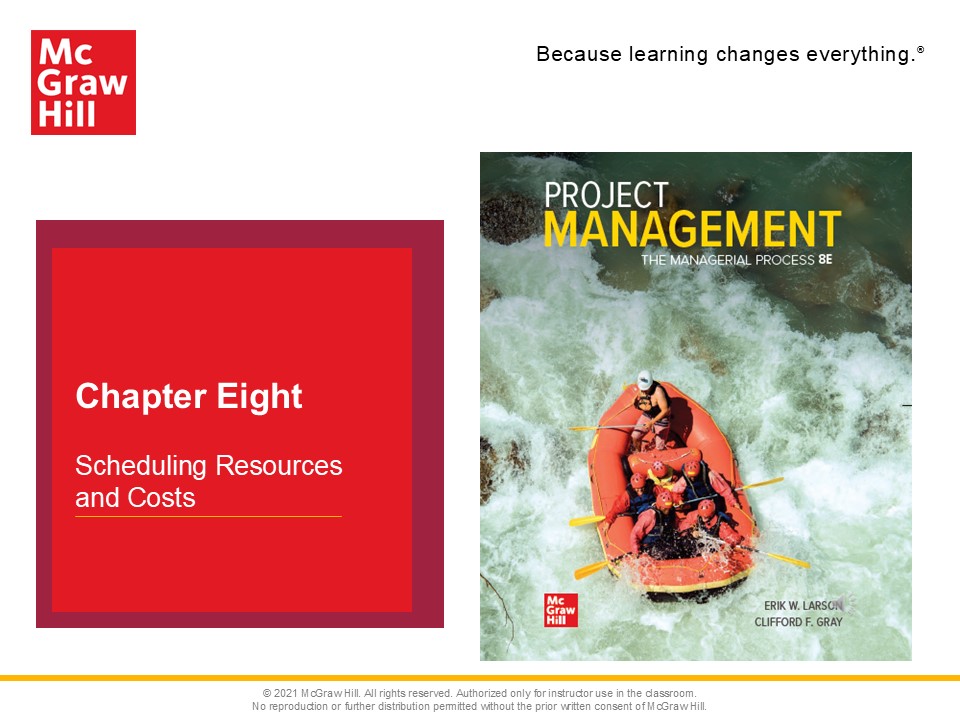









Welcome to Project Management. This is the 8th lesson of this module.
There are always more project proposals than there are available resources. The priority system needs to select projects that best contribute to the organization’s objectives, within the constraints of the resources available. If all projects and their respective resources are computer scheduled, the feasibility and impact of adding a new project to those in process can be quickly assessed. With this information the project priority team will add a new project only if resources are available to be formally committed to that specific project. This chapter examines methods of scheduling resources so the team can make realistic judgments of resource availability and project durations. The project manager uses the same schedule for implementing the project. If changes occur during project implementation, the computer schedule is easily updated and the effects easily assessed.
This lecture series is based on Erik W. Larson and Clifford F. Gray’s Book “Project Management, the Managerial Process” chapter by chapter.
You will find the content of this text highly practical, relevant, and current. The concepts discussed are relatively simple and intuitive. As you study each chapter we suggest you try to grasp not only how things work, but why things work. You are encouraged to use the text as a handbook as you move through the three levels of competency: I know. I can do. I can adapt to new situations.
The learning outcomes of this lesson include:
In this lecture, we focus on these four learning outcomes:
8-1 Understand the differences between time-constrained and resource- constrained schedules when doing project planning
8-2 Identify different types of resource constraints.
8-3 Describe how the smoothing approach is used on time-constrained projects.
8-4 Describe how the leveling approach is used for resource-constrained projects.
8-5 Understand how project management software creates resource constrained schedules.
8-6 Understand when and why splitting tasks should be avoided.
8-7 Identify general guidelines for assigning people to specific tasks.
8-8 Identify common problems with multiproject resource scheduling.
8-9 Explain why a time-phased budget baseline is needed.
8-10 Create a time-phased project budget baseline.
This is a comprehensive lesson plan for about 1.5 -2 hours including a well-prepared PowerPoint presentation, interactive exercises, in-depth case studies, and associated reading materials, designed to provide a holistic learning experience.
To download the full pack of the lesson materials, please visit:
Something went wrong, please try again later.
This resource hasn't been reviewed yet
To ensure quality for our reviews, only customers who have purchased this resource can review it
Report this resourceto let us know if it violates our terms and conditions.
Our customer service team will review your report and will be in touch.